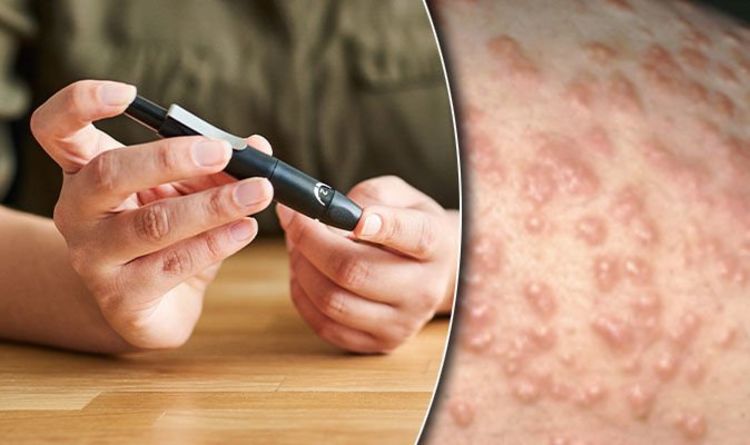
Diabetes is a common condition that affects around 3.7 million people in the UK.
It’s caused by the pancreas not producing enough of the hormone insulin, or the body not reacting to insulin.
Without enough insulin, the body struggles to convert sugar in the blood into useable energy.
You could be at risk of diabetes symptoms if you have an outbreak of small bumps on your skin, it’s been revealed.
Small, pimple-like bumps on your skin could be a sign of diabetes, claimed the American Academy of Dermatology.
The bumps develop very quickly, and are usually found on the buttocks, crooks of the elbow, or backs of the knees.
Speak to a GP if you develop the yellowish-coloured bumps, as it could be a sign of high blood sugar, it said.
“Diabetes can affect many parts of your body, including your skin,” said the American Academy of Dermatology.
“When diabetes affects the skin, it’s often a sign that your blood sugar [glucose] levels are too high.
“Outbreak of small, reddish-yellow bumps [could be a sign to talk to your doctor].
“When these bumps appear, they often look like pimples. Unlike pimples, they soon develop a yellowish colour.
“You’ll usually find these bumps on the buttocks, thighs, crooks of the elbows, or backs of the knees. They can form anywhere though.”
The condition is known as eruptive xanthomatosis, and no matter where it develops, it’s usually tender and itchy.
You should tell your doctor about the bumps, as they could be a sign of uncontrolled diabetes.
When your blood sugar is controlled, the bumps usually disappear quite quickly.
You could also be at risk of diabetes if you have a brown/red-coloured patch on your skin.
The patches may become swollen and hard after a period of time.
Other, more common diabetes symptoms include blurred vision, having cuts or wounds that take longer to heal than normal, and feeling very thirsty.
Those most at risk of the condition are people over 40 years old, or have a close relative with diabetes.
Speak to a GP to reveal whether you could be at risk of diabetes.
